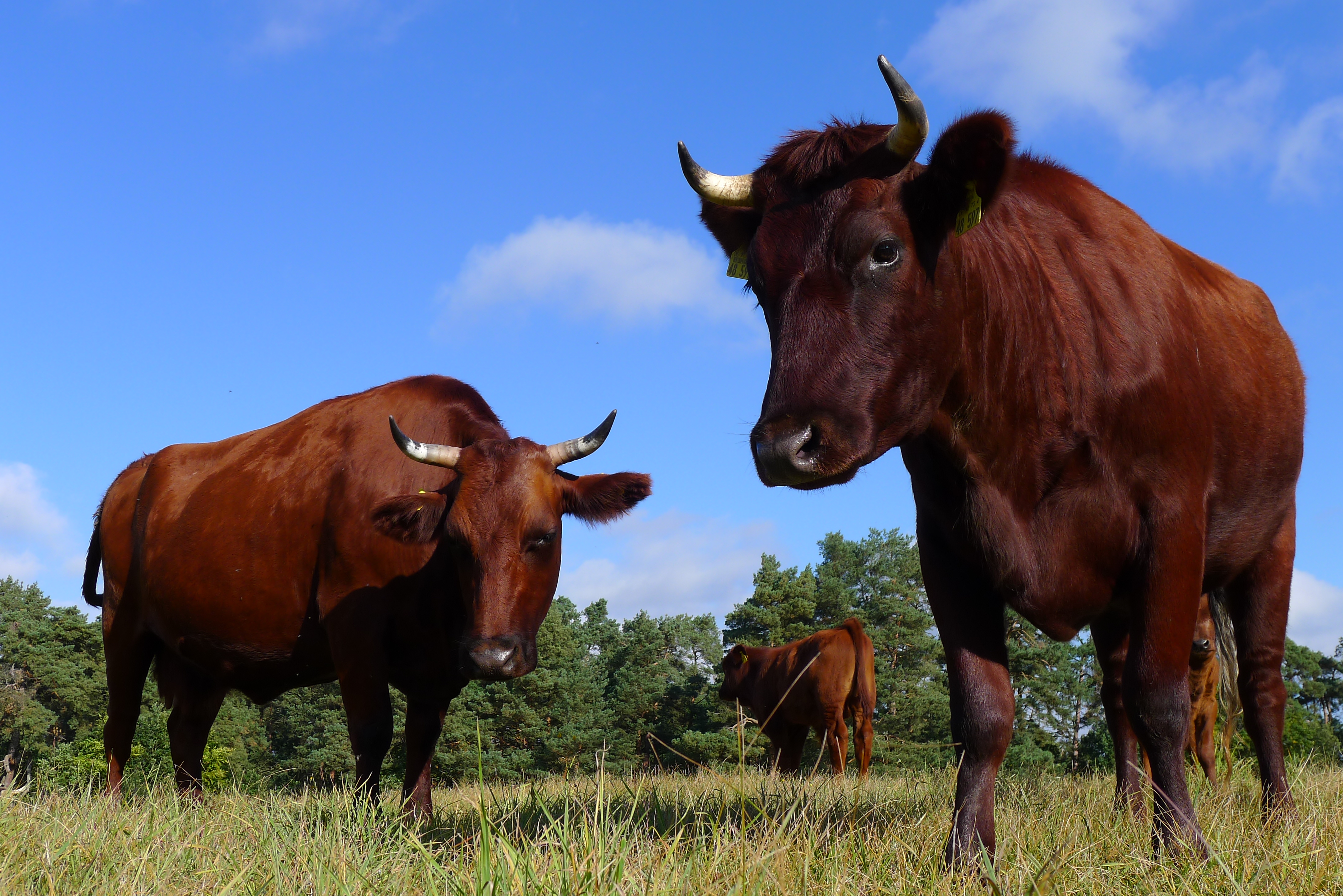
RARE BREEDS TRUST OF AUSTRALIA
powered by TidyHQCattle : ANGLER
Cattle : ANGLER
 Country of origin : Angeln in Schleswig-Holstein, Germany, near Denmark.
Country of origin : Angeln in Schleswig-Holstein, Germany, near Denmark.
Australian Status: 
International status: About 10,000 in Germany (2022).
Photo : Angler cows, from this delightful blog of Erdhof farm, in Germany
Arrived in Australia: 2000's.
Australian Population: 2020 - about 6 full bloods, bred from imported embryos, and about 500 upgrades, most from imported straws. Thank you to IRDBF for assistance. 2020 JL 2022: estimate 10 cows.
History: Sometimes called Angler Rotvieh (red Angler cattle)/Angler Rind (Angler cattle)/Red Angler/German Red Angler/Angeln. Angler is the correct breed name, as used in the country of origin.
An ancient breed, known in the 1600's and thought to go back some 5,000 years. Breed records began in 1830.
Brought to Australia from the 1980's, like several breeds, as straws. Used to improve dairy stock and create the Aussie Red. Some full-bloods bred from imported embryos, and many bred from straws, most being imported.
Rare globally, although from a crisis of numbers in the 1970's the breed made a steady comeback in Germany. Still in relatively low numbers, as commercialisation spurns the good old breeds. Very popular for crossbreeding for their many excellent traits, this practise is slowly dropping the numbers in Germany and stopping the breed gaining in numbers. It's vital they are kept as a breed; there are several passionate breeders in Germany doing this.
The German organisations German Red Dairy Cattle Association and the Angler Breeding Club, in 2008 expressed their gratitude to Australia, as the Angler bull King was popular in establishing Aussie Red lines in the past - his genetics and other Angler bull straws were used by the Williams family of Bosgowan farm at Meningie, South Australia. They were instrumental in establishing the Aussie Red. John Williams and his friend Bill Thompson toured Europe looking at red cattle, as their family had bred cattle for over 130 years, and chose Angler genes to bring back, in the 1980's, to establish the Aussie Red. By choosing Angler, they helped raise the breed profile a lot back home in Germany. Anglers at the time were making a precarious comeback from near extinction.
Used to establish the Australian Red, German Red, Swedish Red and Danish Red - all dairy breeds.
Breed traits: Dairy breed, red colour, sometimes a few white speckles on udder and belly, sometimes a black or dark mask and legs. Long nose, which warms air before reaching the lungs hence good cold climate cattle. Horned, with black-tipped, slightly incurving horns; but sadly, like all breeds, a polled line is being selected for by some breeders who do not have the breed at heart (in my opinion, the traits that go with horns being intrisic to these old breeds). Rampant commercialism dictates polled cattle and giant milk yields - this, it is argued, keeps dairy breeds viable. Horns mean they will travel more independently for better and cleaner feed, be more confident, far less stressed if separated from others, and far more placid.
Placid nature. Intelligent.
Quality milk - high in fat and protein - being 4.5 to 6% butter fat and 3.2% to 4% protein off grass. They are known as "the butter cow". The cheese is also renown, including excellent cream cheese.
Traditionally called "The Arab among cows" in Germany for their beauty.
Genetic studies have proved they have unique genes, not similar to any other cattle breeds. Good pelvic structure and low birth weight calves means calving is usually trouble free. The cows have a live weight of 450 - 650 kg, height of 1.26 - 1.42 m.
Robust breed, once triple purpose - draught, milk and beef, now primarily dairy. Long lived. Fertile.
Very tolerant of a wide range of climate, as in their native land it is cold and icy in winter, but hot and dry in summer. Very good, strong and well formed feet and legs.
Known for being kept and milked on pasture only, and hay in winter, they're good doers and thrive on normal grazing. This makes very healthy milk with good omega three fats.
Good udders. Remarkably free from problems thus easy to keep, together with their conservation grazing habits, they are sought by organic dairies.
The beef is also good quality, tender with short fibres and juicy from marbling, and was among the gourmet choice as aged beef in a recent slow food festival in Germany.
In 2017 the winner of the dairy award, Australian Red Cow Of The Year, was sired by an Angler bull.
Sometimes called Angler Rotvieh (red Angler cattle)/Angler Rind (Angler cattle)/Re
Organisation: None in Australia however ARDB - Australian Red Dairy Bred, better known as Australian Reds or Aussie Reds, is an organisation for several breeds if used as crossbreds - they will register a beast with at least one parent being Ayrshire, Dairy/Milking Shorthorn, Illawarra, Angler, Norwegian Red, Swedish Red, Danish Red or part Red and White Holstein (this breed is limited to 12.5% of an animal). The criteria is for the animal to be red, red and white, or red roan. In this way ARDB helps keep Angler bulls viable.
In Germany, the home country, Angler Rind is the breed organisation.
The International Red Dairy Breeds Federation is an umbrella body for all red dairy breeds, doing tremendously, and should prove very helpful for them all, especially the wonderful Angler! They have a website, and are on Facebook. Many thanks to them for helping with the 2020 census.
Additional Notes:
Several genetics companies here sell Angler straws (usually called German Angler by these companies ), so F1's are not uncommon, and possibly higher.
Page by Janet Lane
